Baseball History Comes Alive Now Ranked #2 by Feedspot Among All Internet Baseball History Websites and Blogs!
Guest Submissions from Our Readers Always Welcome!
Scroll Down to Read Today’s Essay
Subscribe to Baseball History Comes Alive for automatic updates (sign-up block found in right side-bar)
As a Free Bonus for subscribing, you’ll get instant access to my two Special Reports: Memorable World Series Moments and Gary’s Handy Dandy World Series Reference Guide!
Pepper Martin and the Gas House Gang Photo Gallery
Click on any image below to see photos in full size and to start Photo Gallery:
Another Edition of From the Lighter Side!
Pepper Martin and his “Mudcat Band”
“Pepper Martin’s performance in the 1931 World Series was the greatest individual performance in the history of the World Series.” –John McGraw
In the featured photo above, we see Pepper Martin on the right with his “Mudcat Band” in 1937. Around him are Cardinal teammates Frenchy Bordagaray, Bill McGee, former Cardinal Rip Collins, and Bob Weiland. The photo is from the George Brace collection.
Known as the “Wild Horse of the Osage” because of his daring, aggressive baserunning, many contemporary sportswriters labeled him as the next Ty Cobb. While we remember Pepper Martin was one of baseball’s great characters, the heart-and-soul of the Cardinals’ fabled “Gashouse Gang” of the 1930s, what’s often overlooked is that he was actually a pretty good ballplayer.
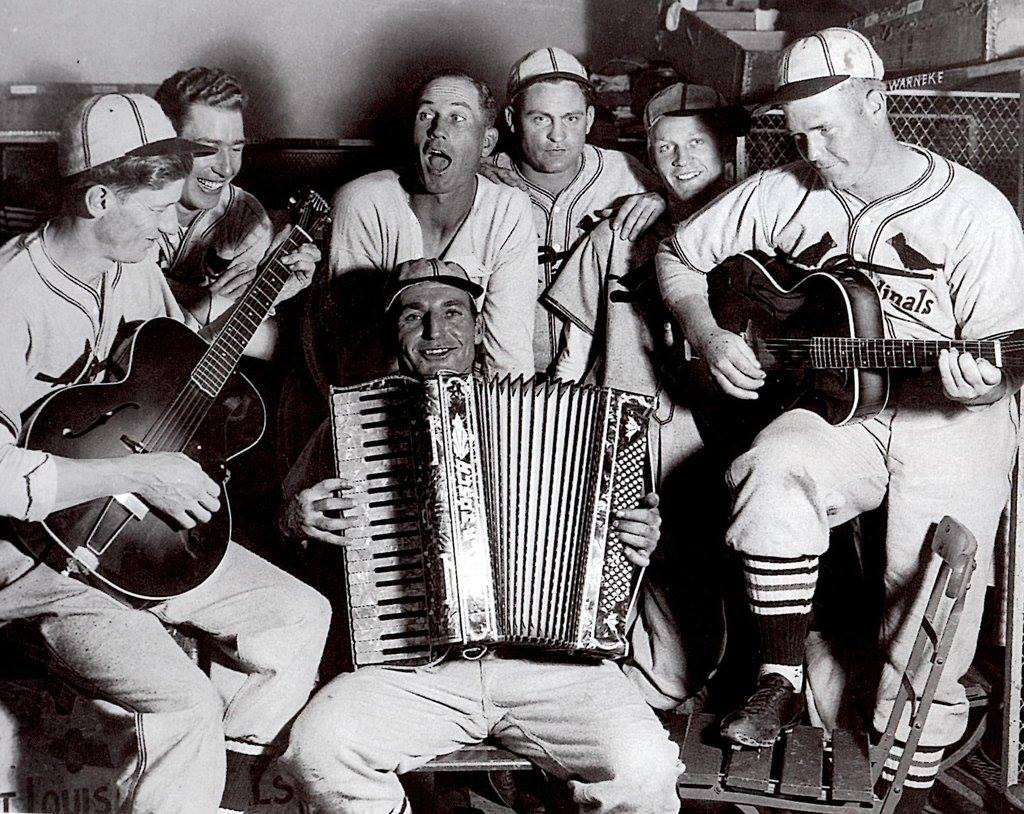
In his 13-year major league career with the Cardinals (1928, 1930-40, 1944), the Oklahoma native hit .298, with 59 home runs, 756 runs, 501 RBIs, .443 slugging average, .358 on-base percentage, and 156 stolen bases. A four-time All-Star, including the starting third baseman in the first All-Star game in 1933, he led the National League three times in stolen bases and once in runs. His career 113 OBP+ mark places him significantly above average among his major league contemporaries (100 being the major league average).
After five years in the minors, Martin made his major league debut with the Cardinals on April 16, 1928 at the age of 24. Appearing in 39 games, he hit .308, helping the Cardinals win the pennant. In the 1928 World Series, he made one appearance as a pinch-runner, as the Cardinals were swept in four games by the Yankees. An indication of just how tough it was to land a major league job in those days, Pepper was sent back to the minors in spite of this impressive showing. It wasn’t until 1931 when Martin, now 27, broke camp with the Cardinals and won a spot on their Opening Day roster.
When regular centerfielder Taylor Douthit fell into a slump, Martin replaced him and played well enough that by June he became the Cardinals’ everyday center fielder, hitting a solid .300 for the season with a .351 OBP. Branch Rickey felt confident enough in Pepper Martin’s ability that he soon traded the veteran Douthit to Cincinnati.
Pepper Martin left his mark when it really counted – in the World Series. In the 1931 Fall Classic, he hit a remarkable .500, including a then-record 12 hits, four doubles, one homer, five RBIs, and five stolen bases while the rest of the Cardinals hit .205 as a team. They defeated the heavily favored A’s with a star-studded lineup that included future Hall-of-Famers Mickey Cochrane, Jimmie Foxx, Lefty Grove, Waite Hoyt and Al Simmons.
After a couple of up-and-down seasons, Martin was again was ready for the
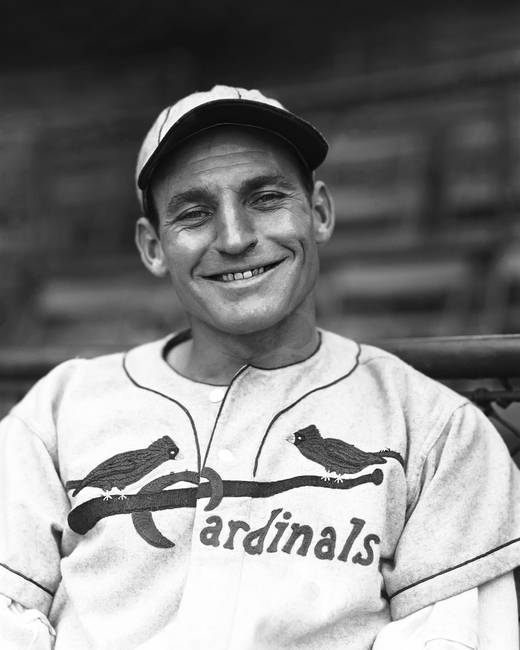
limelight as the Cards won the 1934 pennant. By then the acknowledged leader of the “Gashouse Gang,” he hit .355 in the World Series as this time the Cardinals defeated a powerful Tiger team. His combined 1931 and 1934 World Series batting average of .418 is still a major league record for players with over 60 plate appearances.
Always the showman, the World Series notoriety paid off for Pepper Martin. He was able to book himself on the Vaudeville circuit, earning $1,500 per week at a time when his baseball salary was about $4,000. He formed his infamous “Mudcat Band” with several other Gashouse Gang-era Cardinal players. The band entertained before Cardinals games, booked gigs at local events, and even played on multiple national radio broadcasts.
From 1937 to 1940 his career was in decline due partly to his spirited, hustling style of play that took its toll on his body. Pepper played fewer than 100 games each season. He retired at the age of 36 to manage the Cardinal’s Sacramento affiliate in the Pacific Coast League and then continued a successful minor league managing career over 13 seasons. His fiery temperament was on display during these years, as he once punched one of his players for underperformance. He received suspensions for attempting to choke an umpire, and also for going into the stands to punch out an unruly fan.
In 1944, with big-league rosters thinned by World War II, the 40-year-old Pepper Martin returned to the Cards for 40 games, hitting a respectable .279. He continued managing and coaching until 1959. After baseball, Martin served briefly as the athletic director of the Oklahoma State Penitentiary at McAlester, Oklahoma. He passed away on March 5, 1965, aged 61.
So today we fondly shine our baseball spotlight on one of the game’s all-time zany characters, Pepper Martin.
Gary Livacari
Information: Excerpts edited from Pepper Martin Wikipedia page, Stats from Baseball-Reference.com

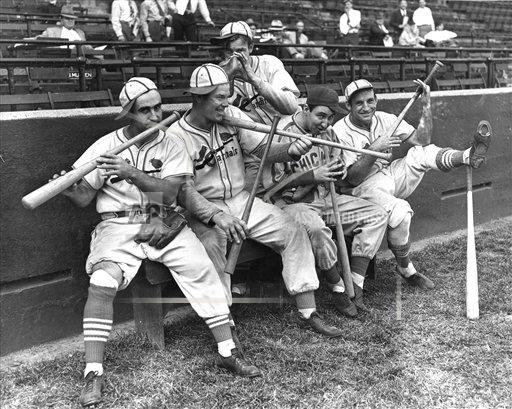
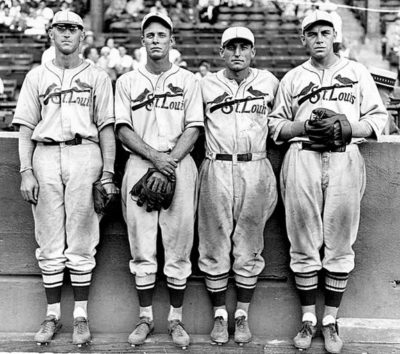
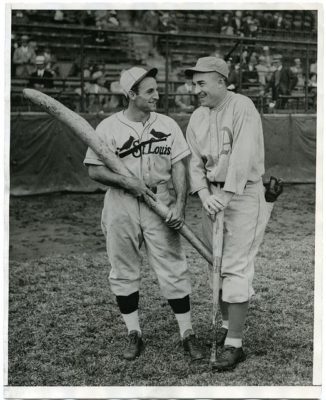
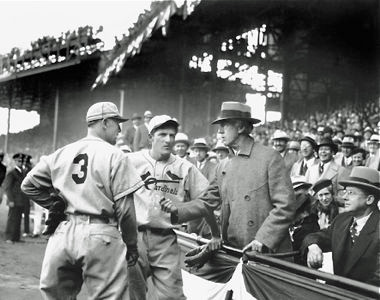
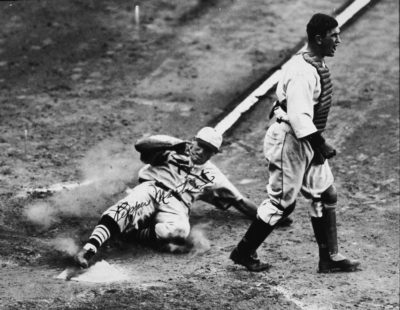
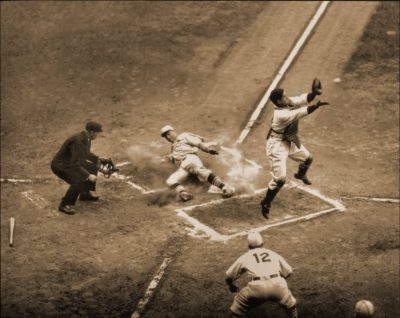
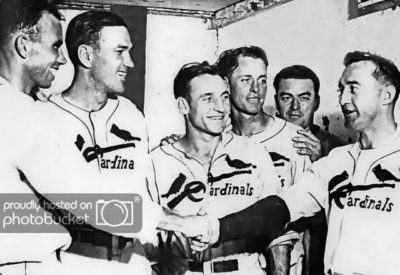

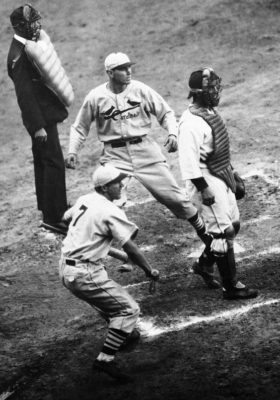

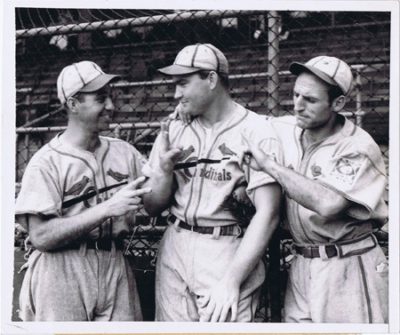
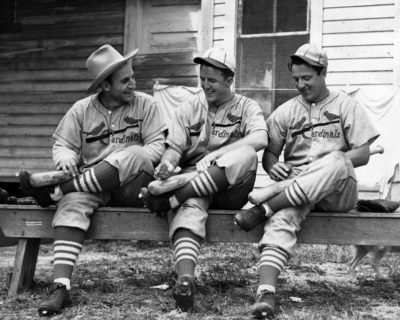
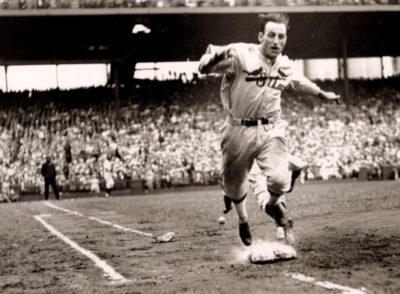
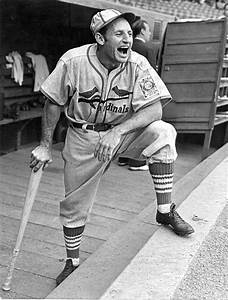
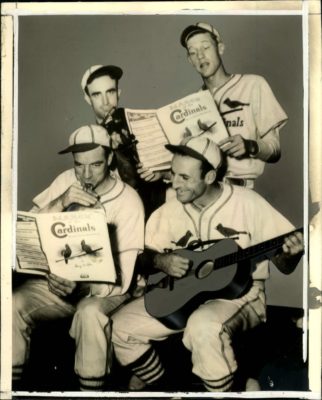
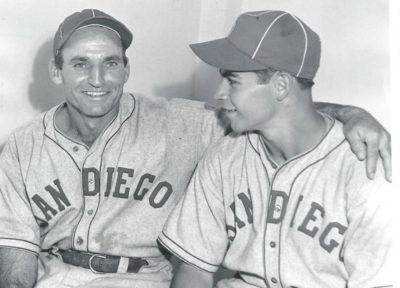
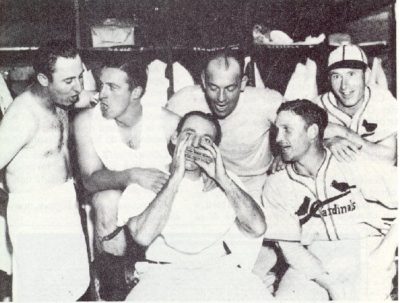
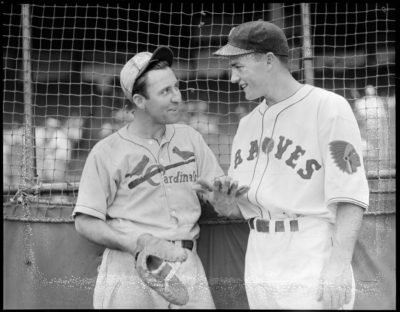
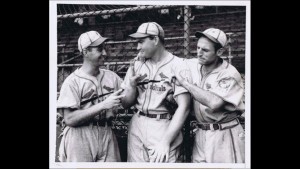
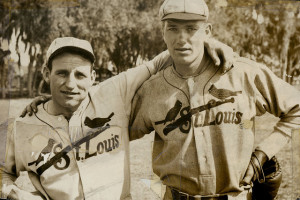
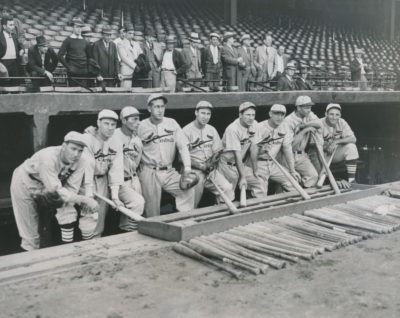
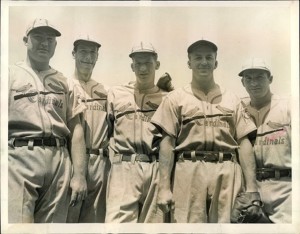
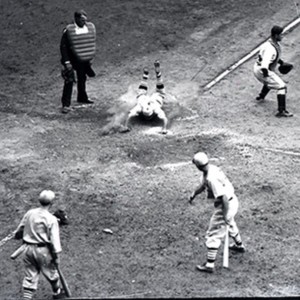
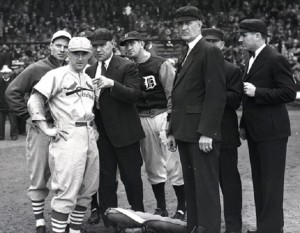
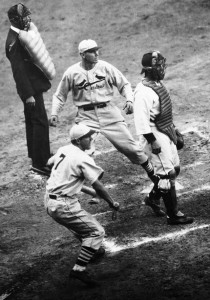
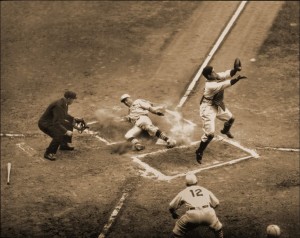
Gary,
Can’t believe Martin was playing when I was first introduced to the joys of baseball!
Those ’31 and ’34 WS batting marks were something, alright.
So, DD, would you ever punch out an under performing Baseball History contributor?
Better get on my horse and pound out another essay.
Pepper was a popular training drill and pre-game exercise in the earlier days of baseball. In addition to teaching the fundamentals of the game, coaches used pepper drills to develop good hand-eye coordination, improve player reaction time and achieve better bat control.
Great points…thanks for checking in!